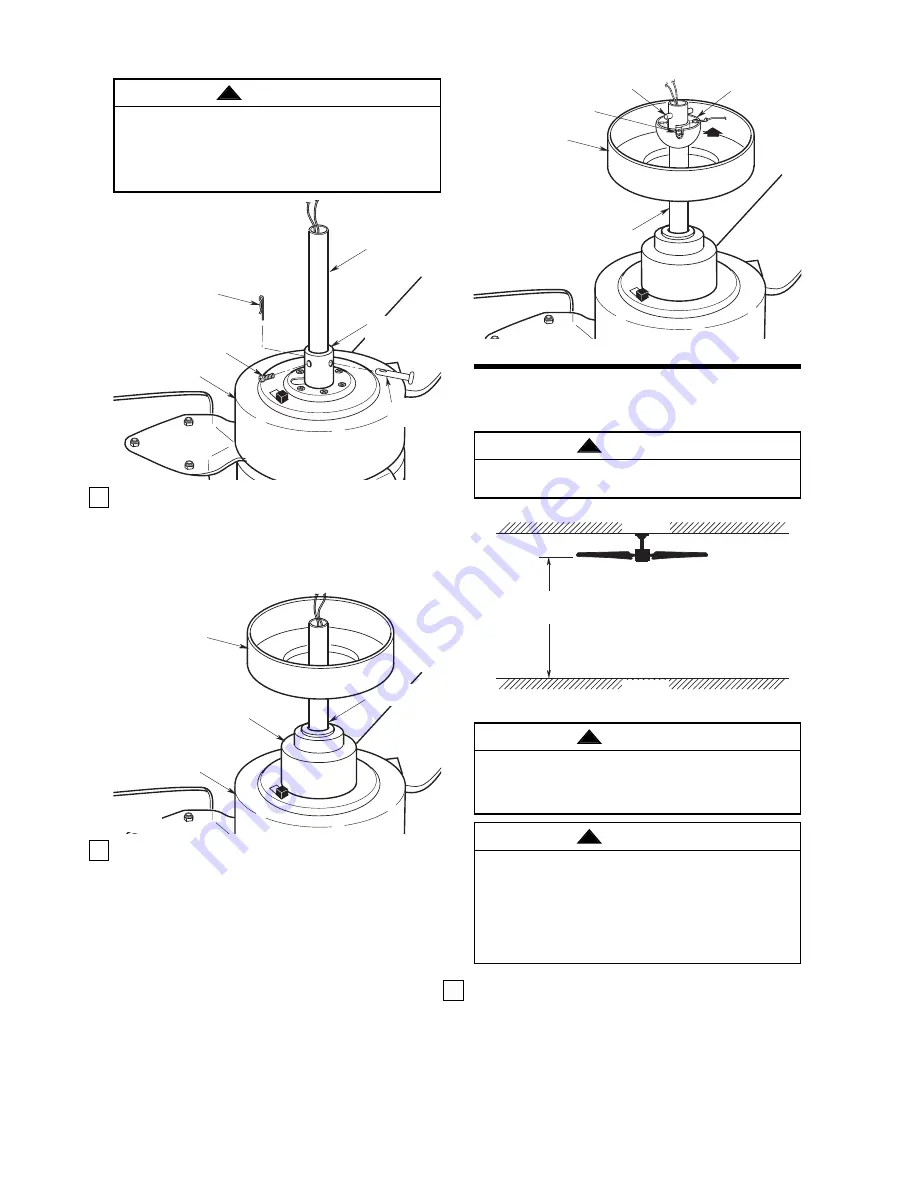
5
It is critical that the clevis pin in the motor coupling
is properly installed and the setscrews securely
tightened. Failure to verify that the pin and setscrews
are properly installed (as shown in Figure 4) could
result in the fan falling.
WARNING
!
MOTOR COVER
REPLACE
SETSCREW (2)
HAIRPIN
CLIP
DOWNROD
CLEVIS
PIN
MOTOR
COUPLING
U.L. Model No.: CF765
Figure 4
8.
Make sure the grommet is properly installed in the
coupling cover, then slide the coupling cover on
the downrod until it rests on the motor housing.
Place the ceiling cover over the downrod. Be sure
that the ceiling cover and the coupling cover are
both oriented correctly (Figure 5).
9.
Reinstall the hanger ball (Figure 6) on the downrod
as follows. Route the two 80” motor leads through
the hanger ball. Position the pin through the two
holes in the downrod and align the hanger ball so
the pin is captured in the groove in the top of the
hanger ball. Pull the hanger ball up tight against
the pin and securely tighten the setscrew in the
hanger ball. Loose setscrews could create fan
wobble.
MOTOR COVER
CEILING COVER
DOWNROD
MOTOR COUPLING
COVER
Figure 5
1.
Securely attach the hanger bracket to the outlet
box using the two screws supplied with the
outlet box (Figure 8).
FLOOR
CEILING
AT LEAST
7'
Figure 7
The fan must be hung with at least 7' of clearance
from floor to blades (Figure 7).
WARNING
!
The outlet box and joist must be securely mounted
and capable of supporting at least 50 lbs. Use only a
U.L. outlet box listed as “Acceptable for Fan Support
of 50 lbs. or less”.
WARNING
!
To reduce the risk of fire, electric shock, or personal
injury, mount fan to outlet box marked “Acceptable
for Fan Support of 50 lbs. or less”, and use screws
supplied with outlet box. Most outlet boxes
commonly used for support of light fixtures are not
acceptable for fan support and may need to be
replaced. Consult a qualified electrician if in doubt.
WARNING
!
CEILING COVER
PIN
HANGER
BALL
SETSCREW
DOWNROD
Figure 6
How To Hang Your Ceiling Fan






























